1970s
The Twilight People
Wikipedia page.
Posted By: Paul - Tue Jun 02, 2020 -
Comments (1)
Category: Animals, Antisocial Activities, Cryptozoology, Ineptness, Crudity, Talentlessness, Kitsch, and Bad Art, Mad Scientists, Evil Geniuses, Insane Villains, Movies, 1970s, Asia
Freeze-Dried Human Bodies
Philip Backman's 1978 patent describes a process for freeze-drying human bodies.The problem with freeze-drying any large animal is that there's not enough surface area to allow for rapid freeze-drying. So, to increase the surface area, Backman explained that it would first be necessary to freeze the body and then smash it into small pieces in a hammer mill. Once the body had undergone this "surface enhancement," it could be rapidly freeze-dried, which would remove the water in the body, reducing its weight by 95%. The resulting remains could be kept in an urn, just like cremated remains.
Backman argued that his freeze-drying process had all the advantages of cremation (in terms of reducing the body to a compact size), but cost less. However, the funeral industry apparently didn't like the idea of running bodies through a hammer mill.


Posted By: Alex - Sun May 31, 2020 -
Comments (6)
Category: Death, Inventions, Patents, 1970s
1979 TV Commercials
Your time machine back to forty years ago. Perhaps a solace in such troubled times as now.
Posted By: Paul - Sat May 30, 2020 -
Comments (0)
Category: Business, Advertising, Culture and Civilization, Foreign Customs, 1970s
Guard Pig
We recently posted about tarantulas used to guard jewelry. Another unconventional security animal was CP, the guard pig, trained to attack by animal trainer Marcel Leblanc:Leblanc said he bought CP—which stands for Canadian Pig—"to fatten up and slaughter for a friend's party."
But he said he noticed the 150-pound, 6-month-old, pink and white Yorkshire pig learned tricks quickly. So he placed the animal among the Doberman pinschers and German shepherds in a police canine training program.
"The pig performed better than the dogs," said Leblanc.
If a 150-pound pig was charging at me, I'd sure run away!

Orlando Sentinel - Sep 23, 1979

El Paso Times - Oct 10, 1979


Fort Worth Star Telegram - Oct 10, 1979
Posted By: Alex - Thu May 28, 2020 -
Comments (7)
Category: Animals, Crime, 1970s
The Phone Thing
Those of us who are old enough might recall that in addition to linear slide rules, there were circular slide rules.Such an arrangement of movable circular parts was extrapolated to a variety of other gadgets for calculating different things.
You can see a museum of such "disk or wheel" charts here.
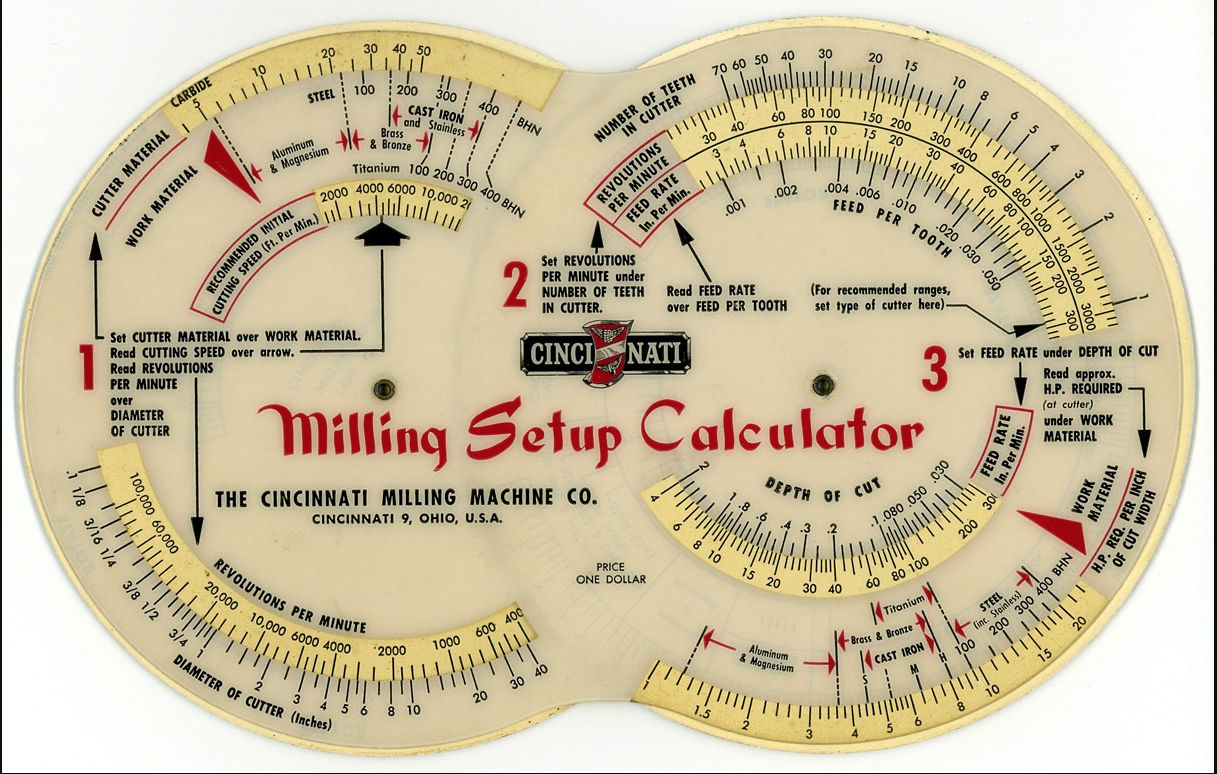
I set out on this search thanks to the 1979 ad below.
I wonder if anyone relies on such devices nowadays, or if businesses create them for promotional purposes, as Bell Telephones did in 1979.
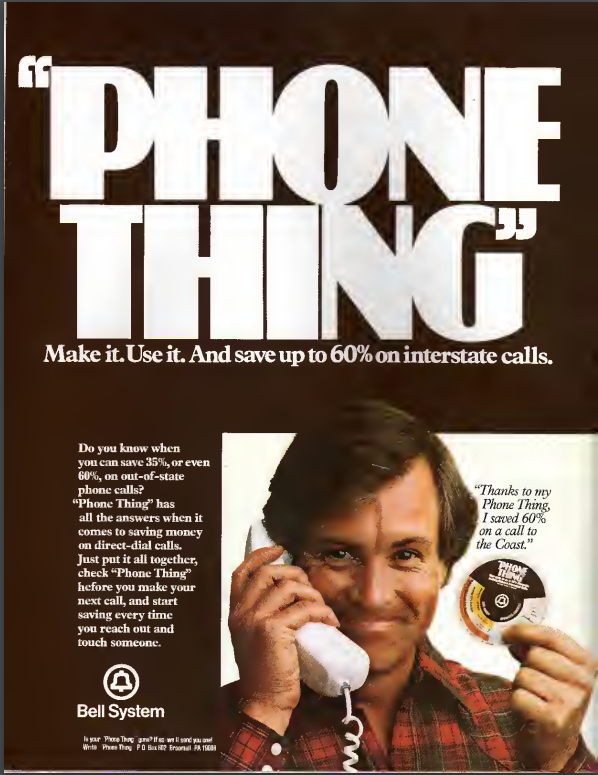
Phone Thing source. (Page 6)
Posted By: Paul - Thu May 28, 2020 -
Comments (3)
Category: Business, Advertising, Telephones, Instruments and Measuring Devices, 1970s
The gunman who wasn’t there
"Oakland police spent two hours last night trying to convince a mentally disturbed gunman holed up in his apartment to surrender—only to discover that he was standing next to them helping to direct the police."
San Francisco Examiner - June 16, 1974
Posted By: Alex - Wed May 27, 2020 -
Comments (0)
Category: Crime, 1970s
The postman who pretended to be paraplegic
Ian Moor had qualified to compete in the 1979 National Paraplegic Championships, in events such as table tennis and wheelchair discus. But when a picture of him ran in the Yorkshire Evening Press, people recognized him as their postman, who was fully capable of walking.His deception revealed, Moor was kicked out of the Paraplegic Championships. But he never faced any criminal charges because he hadn't benefitted financially from his deception in any way.
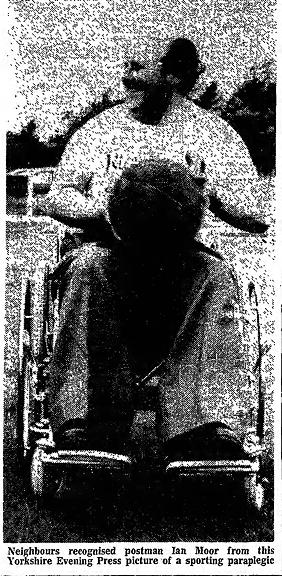
The Guardian - Aug 23, 1979
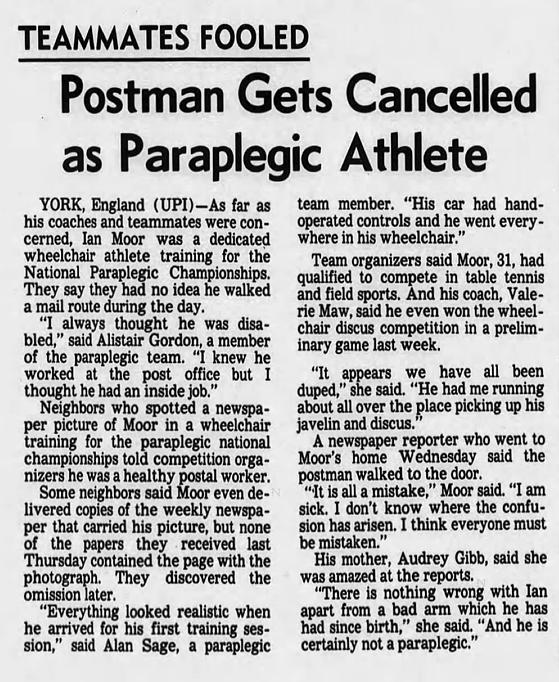
Los Angeles Times - Aug 23, 1979
Posted By: Alex - Fri May 22, 2020 -
Comments (2)
Category: Hoaxes and Imposters and Imitators, Sports, 1970s, Differently Abled, Handicapped, Challenged, and Otherwise Atypical
Clint Bolin, Rock Collector
Clint Bolin collected rocks. That, in itself, isn't weird. However, Bolin made it weird by hoarding massive amounts of rocks of absolutely no value. He also collected chunks of concrete and slabs of cement.When he vacated his Long Beach apartment in 1975, he left behind 60,000 pounds of rocks, all neatly boxed. There were about 600 rock boxes, each weighing over 100 lbs.
Strangely, no one had ever seen him carrying any of these boxes in. And he was only a frail man, weighing about 150 lbs. Plus, he had only lived in the apartment for four months. So how he managed to accumulate so many boxes of rocks in his apartment remains a mystery.
I haven't been able to find any sources that describe what became of him after he made headlines in 1975. It's as if he disappeared into thin air.

Los Angeles Times - May 8, 1975


Posted By: Alex - Thu May 21, 2020 -
Comments (5)
Category: Hobbies and DIY, 1970s
Trapped 5 days in folding bed
Unfortunately, I can't find any info about how Leon Colby fared after his 5-day ordeal trapped in a folding bed.The situation seems like an absurdist, real-life variation on the premise of Stephen King's Gerald's Game.

Lancaster Intelligencer Journal - Oct 10, 1977
Some googling reveals that, while being trapped in a folding bed may sound bizarre, it's disturbingly common. See here, here, and here.
Posted By: Alex - Tue May 19, 2020 -
Comments (2)
Category: Accidents, Furniture, 1970s
Drunk Driving Defense
Back in 1971, Melvin Baker offered a novel defense for why he shouldn't have been charged with drunk driving. He was, he said, too drunk to have made an intelligent decision about whether to submit to the breathalyzer test — the results of which led to him being charged. He apparently argued this case all the way up to the New York Supreme Court.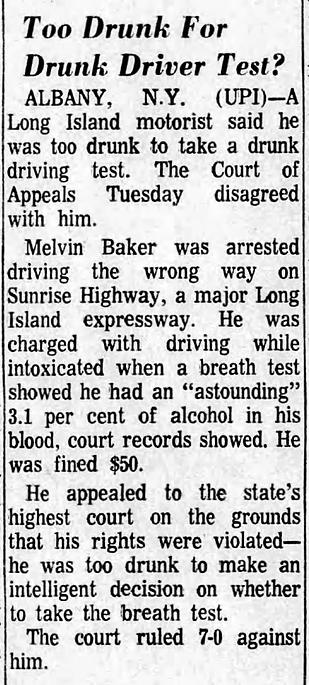
Santa Rosa Press Democrat - July 7, 1971
Details about this case are hard to come by, but this other brief article offers an explanation for why Baker persisted with his seemingly hopeless argument. Because if he had refused to take the test, he would only have had his license suspended. But having taken the test, and failed it, he also faced criminal prosecution. So it was all an elaborate, legalistic ploy to get the lighter penalty.

Long Beach Independent - Sep 7, 1971
Posted By: Alex - Thu May 14, 2020 -
Comments (2)
Category: Inebriation and Intoxicants, Law, 1970s, Cars

| Who We Are |
|---|
| Alex Boese Alex is the creator and curator of the Museum of Hoaxes. He's also the author of various weird, non-fiction, science-themed books such as Elephants on Acid and Psychedelic Apes. Paul Di Filippo Paul has been paid to put weird ideas into fictional form for over thirty years, in his career as a noted science fiction writer. He has recently begun blogging on many curious topics with three fellow writers at The Inferior 4+1. Contact Us |




